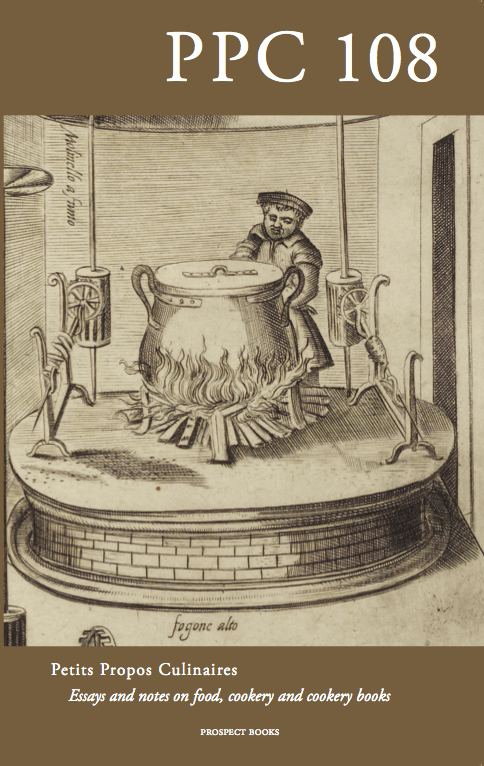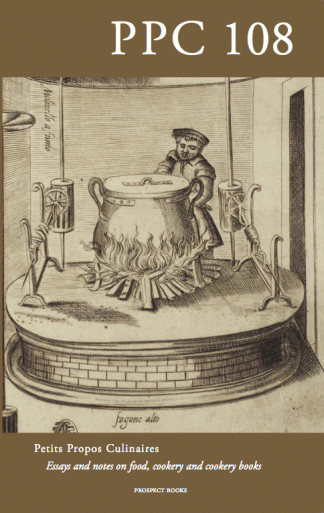Description
Contents
15 A Fastidious Frugality
Bridget Henisch
25 A Rose by Any Other Name: the Many Incarnations of Summer Pudding
Mary-Anne Boermans
39 A Fine Romance: Rupert Croft-Cooke, India and Indian Foodways
Blake Perkins
55 Kebab Pizza, Fried Pizza & Chips, Sushi Pizza: a Study in Culinary Versatility
Alexandra Grigorieva
61 The Chef and the Cordon-Bleu
Philip Hyman
66 Functional Broth
Don Peterson
69 Dragons, Kickshaws and Butterflies
Donna McDonald
74 The Lack of Evidence Concerning the Existence of Classical Roman Pasta
Noah Arney
77 The Charlie Cart Project: a Mobile Kitchen for the Twenty-First Century
Carolyn Federman
84 ‘Make that two Toddies!’
William Sayers
88 Cooks and their Books: the Cookery Collections at Leeds University Library
Rhiannon Lawrence-Francis
90 Dinner Down Under, 1874
Marcus Clarke
96 Book Reviews
Extract from Mary Boermans,
A Rose by Any Other Name: the Many Incarnations of Summer Pudding
Summer pudding is a simple, bread and berry pudding that is a regular on lunch tables during soft fruit season. Words such as ‘classic’ and ‘quintessential’ are often bandied around when summer pudding crops up, but compared to other well-known British desserts, it is a comparative youngster.
Whilst desserts such as syllabub and trifle date back hundreds of years, summer pudding recipes have only been appearing in print for just over a century. Notwithstanding the numerous debates and differing theories as to the origins of the pudding, the current holder of the title for ‘Earliest published recipe for summer pudding’ can be found in a book entitled Sweets (Part One), No. 6 in The ‘Queen’ Cookery Books, collected and described by S. Beaty-Pownall (1904).
Although this is the first recipe to use the specific name ‘summer pudding’, it is not exactly the recipe that we use today. Most jarringly, in this recipe the mould is buttered ‘as for apple charlotte’. The reason for this is not clear. With an apple charlotte, the combination of the bread, butter and the long, slow baking in the oven generates a deliciously crisp and golden exterior to complement and contrast against the hot fruit filling. Beaty-Pownall’s recipe doesn’t venture anywhere near the oven, so this crisping never occurs. Indeed, it is the softness and barely-held-together-ness of summer pudding that is one of it’s major attractions. When it is poured into the bread-and-butter-lined bowl, if the heat of the stewed fruit is hot enough to melt the butter on the sides of the basin, the result is going to be rather less delicate and rather more greasy than the recipe we know today.
Interestingly, the page preceding that of Beaty-Pownall’s summer pudding contains not only a recipe for apple charlotte, but also one for the children’s pudding, which bears a marked similarity to summer pudding. The buttered mould is lined with sponge cakes and the filling comprises layers fresh fruit and brown sugar, topped off which a little milk and more sponge cake. The whole being baked in the oven for just half an hour.
All three recipes have similarities – a lined, buttered mould, sweetened & cooked fruit – and have been grouped together in the chapter on nursery puddings. All three puddings are delicious if well made and their attraction lies in part due to their simplicity. Apple charlotte and summer pudding are still enjoyed today and, if carefully made, are suitable for the most elegant of tables.
However, as with many recipes, there is a little more to the story if you look hard enough. Whilst I absolutely agree that the 1904 recipe for summer pudding is the earliest of it’s name in print, it’s difficult to dismiss earlier recipes that call for lightly-stewed berries to be poured into a bread-lined basin which is then weighted and left to stand for several hours, purely because the name is different to the one we use today. Ms Beaty-Pownall acknowledges the tendency of the recipe to appear in various pudding disguises, and helpfully lists those of which she is aware, namely: hydropathic, Rhode Island and Wakefield. Also mentioned is a variation known as Doctor Johnson’s pudding, consisting of alternate layers of sliced bread and stewed rhubarb weighted and left overnight to firm up. Despite my best efforts, I have yet to find any version under the title of Rhode Island pudding and nothing to link the estimable Dr Johnson with rhubarb, aside from his once mentioning it in a letter.
On my own bookshelves is an anonymous and undated (although research appears to indicate a publication date of 1892) Victorian publication entitled “More Tasty Dishes”. One of the recipes in the book is for hydropathic pudding, which is merely summer pudding with a different title. I was delighted to finally find this recipe actually written down, because it had begun to take on almost mythical properties. For years I’d been reading articles that mention hydropathic pudding as being an early version of summer pudding. Served in Victorian spas, its lightness and freshness was a relief from the popular but heavy suet and steamed puddings of the day. Despite being mentioned in passing in several articles on summer pudding, I’d been unable to find absolutely anything in print so I was beginning to wonder if this particular version was a myth itself.
Following the lines of the healthy dessert even further back, the recipe appears in another guise, Malvern pudding, as early as 1868. A spa town of renown since the seventeenth century, Malvern is surrounded by the lush, fruit-filled landscapes of both Herefordshire and Worcestershire, that overflow with the fresh berries used in this pudding. The combination of availability of ingredients and the stream of spa visitors, it is not unreasonable to assume that the pudding owes much of it’s popularity to this time and place. Visitors would take, if not the recipe, then certainly a knowledge of the pudding away with them, when they returned home after their invigorating stay in Malvern.
Of all the recipes I have been able to find, ‘Malvern pudding’ is the recipe’s most popular incarnation, occurring in at least six books over a twenty year period from the 1860s to the 1880s, and onwards into the twentieth century as far as 1912. After the 1880s, the pudding undergoes a name change and recipes occur more frequently as ‘hydropathic pudding’, the geographical link to Malvern being dropped in favour of emphasizing the healthful aspects of the dish. It is thus also easier for any spa town or indeed the mistress of a house to appropriate the recipe for themselves under such a generalized title, rather than acknowledge it’s origins in Malvern.
Except the origins aren’t in Malvern. This berry pudding might well have achieved popularity in Malvern, but it also appears in even earlier recipes under different titles. In the technologically advanced twenty-first century, the ability to search for recipes becomes ever easier, as more and more books are digitized and available online to search from the comfort of your own home. However, this ease is offset, to a large extent, by the fact that it quickly becomes apparent that recipes change titles with frustrating frequency. Recipe hunting thus becomes very much a labour of love, in that with titles to a large extent superfluous, a requirement to read the recipe itself becomes the main method of identifying whether or not it is relevant to a particular search.
This laborious method brings other considerations, such as how far does one allow the recipe to deviate from the modern incarnation and still be considered part of that recipe’s ancestry. Using summer pudding as the example, how should we view the use of sponge, rather than bread? Should a pudding where the bread and fruit are layered, as opposed to filled, be included or not? What if the layers are of breadcrumbs instead of slices? Is temperature a qualifying factor, thus excluding any berry-filled, bread-lined puddings that are served hot? This thorny issue can even go so far as to blur the lines between one well-known recipe and the next. A recipe for ‘delicious fruit pudding’ (1856) involves sweetened redcurrants and raspberries, and layers of bread, but it is baked in the oven and served hot from the dish it was baked in, and not turned out. It has all the ingredients of a summer pudding, but it is served like a charlotte. The earliest summer pudding-esque recipe I have been able to find dates from 1808. It is very much in the style of a modern ‘deconstructed’ interpretation – stewed, sweetened fruit with a serving suggestion of bread or to be made into puddings. I find it curious that this pudding is so free-form when Mrs Rundell’s charlotte recipe of the previous year is so structured in it’s method and shape.


